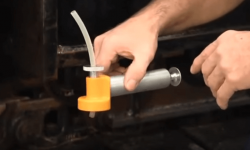Know the Proper Base Number of Your Oil
The base number (BN) is a property that is more associated with engine oils rather than industrial oils. It can be defined as the oil’s ability to neutralize acids that are produced during use. The higher the base number in the engine oil, the more acid it will be able to neutralize during use.
New engine oils usually have a range of 5 to 15 base number. As oil is used in service, it becomes contaminated with acids, causing the base number to drop over time. By using oil analysis for your engine oil, you will be able to track the base number of your oil and determine how much life is remaining. Once the base number drops below 3, this is considered too low and should trigger an oil change for your engine.
The most common reasons for a drop in the base number are related to low-quality fuel and oil oxidation. During combustion, a low-quality fuel with high sulfur content can produce sulfuric acid, which attacks the oil and causes a drop in the base number. Oil oxidation as a result of the engine overheating or an attempt to extend the oil drain interval is another reason you may see a drop in the base number.
The acid number (AN) is a property that is generally more associated with industrial oils than engine oils. It is the amount of acid and acid-like substances in the oil. As mentioned previously, oil oxidation is one of the main producers of acid.
As oil is used in service, acidic components are generated and build up in the lubricant, with the end result being an increase in the acid number. A high acid number represents the potential for corrosion, rust and oxidation. It can also be a signal to perform an oil change. Again, by using oil analysis, you will be able to track the AN of your oil and schedule oil changes.
You also will need to set a critical limit for when the acid number reaches a certain number in order to schedule an oil change. This critical limit will be dependent on the type of oil being used. Typically, for R&O or light-duty oils, a maximum acid number limit of 2 is appropriate. For anti-wear and extreme pressure (EP) oils, an AN limit of 4 is a good starting point.






